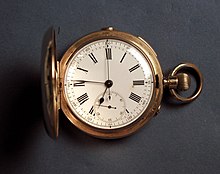Heirloom


In popular usage, an heirloom is something that has been passed down for generations through family members. Examples are antiques or jewelry.
The term originated with the historical principle of an heirloom in English law, a chattel which by immemorial usage was regarded as annexed by inheritance to a family estate. Loom originally meant a tool. Such genuine heirlooms were almost unknown by the beginning of the twentieth century.[1]
English legal history
In the English legal system, any owner of a genuine heirloom could dispose of it during his lifetime, but he could not bequeath it by will away from the estate. If the owner died intestate, it went to his heir-at-law, and if he devised the estate it went to the devisee. The word subsequently acquired a secondary meaning, applied to furniture, pictures, etc., vested in trustees to hold on trust for the person for the time being entitled to the possession of a settled house. Such things were more properly called settled chattels.[1] As of 1 January 1997, no further settled land can be created and the remaining pre-existing settlements have a declining importance in English law.[2]
An heirloom in the strict sense was made by family custom, not by settlement. A settled chattel could be sold under the direction of the court, and the money arising under such sale is capital money.[3] The court would only sanction such a sale, if it could be shown that it was to the benefit of all parties concerned and if the article proposed to be sold was of unique or historical character. The court had regard to the intention of the settlor and the wishes of the remainder men.[1][4]
In literature
In the Anthony Trollope novel The Eustace Diamonds the plot hinges on the heirloomic status (or not) of a diamond necklace.
See also
References
- ^ a b c Chisholm, Hugh, ed. (1911). . Encyclopædia Britannica (11th ed.). Cambridge University Press.
- ^ Trusts of Land and Appointment of Trustees Act 1996, s.2
- ^ Settled Land Act 1882
- ^ Re Hope, Dr Cello v. Hope [1899] 2 Ch. 679
- This article incorporates text from a publication now in the public domain: Chisholm, Hugh, ed. (1911). "Heirloom". Encyclopædia Britannica (11th ed.). Cambridge University Press.
